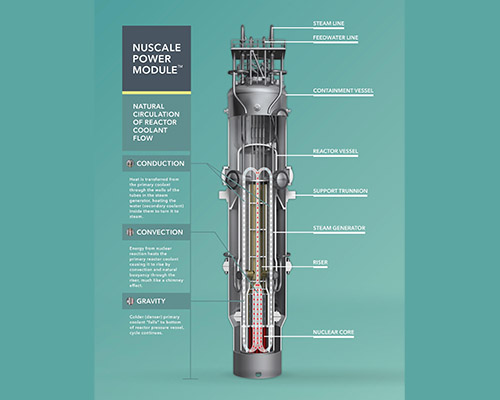Until the locomotives of the 1860's[1], the fastest a human being could travel was on horseback - a limitation that had existed since the dawn of time. Yet once broken, it would only take fifty years for humanity to invent the automobile, radio and airplane, and only fifty years thereafter to discover atomic science, computing and rocketry.
In another way of saying: humanity needed 300,000 years to develop a means to outrun a horse – but only a century beyond that to walk on the moon.
We accomplished these goals by continually improving our ability to build systems that could manufacture new technology with ever-increasing precision and sophistication.[2]
The results of these efforts are seen today in the form of our modern marvels: computers, smartphones, air travel and global internet communications. But less seen are the breakthroughs in machining precision, material science, computerized automation and logistical expertise that enable us to mass-manufacture those marvels in the first place. The capabilities we have developed in those areas would have been unthinkable for all but the last few decades of human history. Without them, the modern era as we know it would not exist.
Nearly every product in our society - even highly complex and safety-critical systems - are mass-produced on automated assembly lines using standardized, interchangeable parts. Boeing, for example, can assemble a 787 Dreamliner in 27 business days. Ford can assemble an F150 pickup truck in 20 hours. Apple can manufacture 350 iPhones every 60 seconds. Power and resource systems, however, are rarely mass-manufactured as identical product models. Instead, they are generally made to order as unique entities – custom designed and built from scratch.
For most every power plant thus-far built, a company gathered an architect and an array of engineers to design the plant, followed by the contractors to construct it, banks and bondholders to fund it, the insurance companies to underwrite it, the lawyers to approve it and the regulators to sign off on it. And if they wanted to build another power plant, they then had to wipe the slate clean and do it all over again because the math and materials that worked for plant A didn’t work for plant B or any planet thereafter.
This drastically increases both the time and cost of building power infrastructure. Consequently, power plants can today cost tens of billions of dollars to build and take years to complete. Nuclear power and commercial aviation share similar degrees of engineering complexity and safety requirements. Yet while Boeing can assemble a state-of-the-art aircraft in less time than it takes Budweiser to brew a bottle of beer, the following three images show an eight-year time lapse of the latest upgrade to the Vogtle nuclear power plant in Georgia, which first went online in 1986. The plant's latest upgrade of two new reactors took ten years to complete at a cost of $25 billion.[6]
This also places substantial pressure to extend service lifetime of existing power plants even as new and superior technologies emerge. As of this writing, more than half American base load power plants were built before 1980 with an expected lifespan of 50 years.[3]
Our power infrastructure today further uses an array of non-standardized fuels, and plugs into a power grid that is equally non-standardized and largely antiquated in both age and design.[4] Accordingly, the United States’ national electric grid is comprised of 7,600 non-standardized power plants that are owned by 3,200+ competing utility companies that transmit electricity through 450,000+ miles of high voltage power lines and millions of miles of lower voltage lines - most of which are both proprietary and vulnerable to natural disasters or blackouts from faltering equipment.[5]
We believe there is a better way.
Scarcity Zero seeks to leverage our recent breakthroughs in manufacturing technology to build power and resource infrastructure as identical, mass-produced systems made to a modular standard. This is how commercial aviation became possible. This is how cars are affordable to most every American. This is how smartphones found their way into most every pocket.
Several companies have begun adopting this mindset into their own manufacturing processes, which has led to emergent prototypes in power system design.
But this by itself is short of a universal standard where we as a society build power and resource infrastructure like we build microwaves, plug them in like we install batteries or swap them as we replace lightbulbs.
Our manufacturing technology is today capable of delivering that standard, which in such capacities accomplishes several important goals:
- First, this fractionalizes both time and cost of system assembly. If one imagines the time and expense involved with building a smartphone or SUV, it would be several orders of magnitude greater to design and build each one from scratch as unique, custom entities. The same is true with power and resource systems. By mass manufacturing identical system models to a modular standard, power and resource systems can be built in days instead of years.
- Second, this makes it far easier to scale or replace power/resource infrastructure on-demand. If a region needs to double, triple or quadruple its power and resource output, this need can be met simply by bringing in more modular systems and plugging them in. If a system is nearing end of life and needs replacement, this can be facilitated expeditiously – enabling the older system to be repaired, upgraded and/or recycled.
- Third and most importantly, this approach allows cogenerative design to be included in all aspects of system engineering. Cogeneration is a process that involves harnessing the excess waste energy of one system to power the functions of others. Interweaving cogeneration throughout multiple aspects of system operation enables auxiliary resource production to occur at scale with low to zero additional energy overhead.
In practical terms, cogenerative design gives us ample energy sources to desalinate seawater into both fresh water and hydrogen fuel, as well as power systems for carbon capture, waste management, indoor farming and advanced material synthesis.









